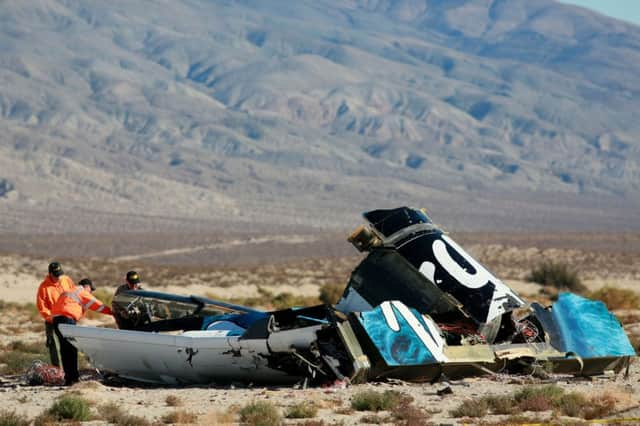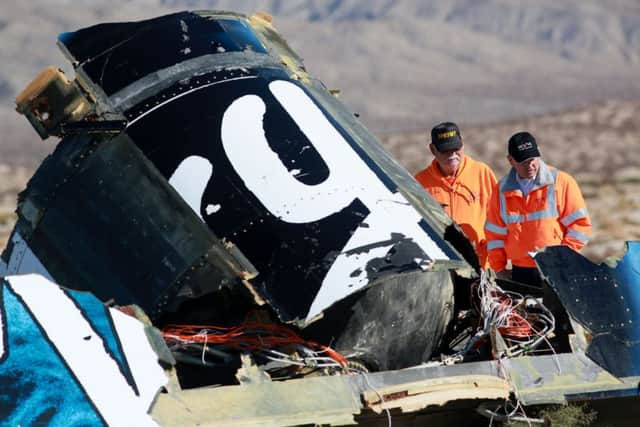Scots test pilot opens up on Virgin Galactic crash


Dave Mackay, the company’s chief pilot, had been flying the mothership called White Knight Two, which had carried the craft into the air before releasing it.
Speaking to the BBC about last October’s disaster over the Mojave desert in California, he explained what happened.
Advertisement
Hide AdAdvertisement
Hide AdMr Mackay, who grew up in Sutherland, said: “We were listening out on the radio and it became apparent fairly early that something had gone seriously wrong.”


“We didn’t see anything. We launch the spaceship and it drops below us several hundred feet before it ignites the rocket motor.
“When it was apparent the wreckage had hit the ground, we descended to try to give some support in any way we could. It involved, basically, finding out where the vehicle was and finding out where the survivor was and relaying that position back to emergency services.”
Peter Siebold, 43, the director of flight operations at Scaled Composites, was piloting SpaceShipTwo and survived the crash, but his co-pilot Michael Alsbury was killed when the craft suffered what the firm called a “serious anomaly”.
Mr Siebold had been unaware that Mr Alsbury had earlier unlocked the feathering system that controls descent, the US National Transportation Safety Board (NTSB) said.
Giving an update of its investigation in the weeks following the crash, the NTSB said it had spoken to Mr Siebold.
It added: “His description of the vehicle motion was consistent with other data sources in the investigation.
“He stated that he was extracted from the vehicle as a result of the break-up sequence and unbuckled from his seat at some point before the parachute deployed automatically.”
Advertisement
Hide AdAdvertisement
Hide AdRecalling the fateful day, Mr Mackay expressed his pride at how everyone had reacted, adding that it had taken him some time to get over the “shock and sadness”.
When asked about the future, he recalled German aviation pioneer Otto Lilienthal’s glider fatal crash in 1896, questioning where we would be today if people had given up on flying then.
He added: “It is hard. It has turned out to be harder than we thought it would.
“But if it was easy, it would have been done a long time ago.”
Speaking last October, Mr Mackay, who took a degree in aeronautical engineering at Glasgow University, added that he was enjoying the challenge.
After graduating, he joined the RAF and served for 16 years but by his late 30s his chances of space flight seemed very slim.
The NTSB’s report into the Virgin spaceship crash is due to be published in the next few weeks.
Hundreds of people have signed up for Sir Richard Branson’s Virgin Galactic experience.
The firm is building a replacement spaceship.